The words “full moon” in many languages

It is said that there are more than 6,000 languages worldwide (this is hard to imagine) and it is a fascinating concept to think, there are probably as many words for “full moon”.
Here we begin our little journey to the full moon. A few words about the fascinating quest of the greater purpose, that includes the full moon circulating through our lives. In layman’s terms and not always scientific (astronomy experts – don’t look too closely!). We would like to wish you illuminating moments. Enjoy!


It is said that there are more than 6,000 languages worldwide (this is hard to imagine) and it is a fascinating concept to think, there are probably as many words for “full moon”.
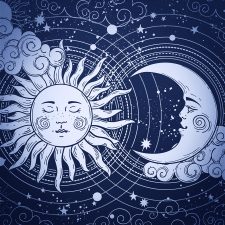
A full moon is when the Sun and the Moon are facing opposite, being in opposite direction from an Earth perspective.
This might feel astonishing if one imagines that the Moon is on one side, the Sun on the other and the Earth in between? Shouldn’t the Earth throw a shadow onto the Moon? Bingo – this is exactly what she does! But only when the Moon is exactly on the Earth orbit, the so called “ecliptic”. When this takes place, we speak of a lunar eclipse!
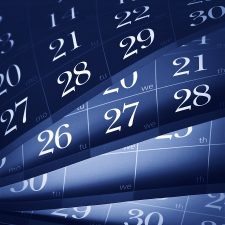
The Moon needs 27.33 days to circle around the Earth. Something that is also referred to as “sidereal time”. But because the Earth orbits the Sun, just like the Moon orbits the Earth, the Moon has to travel two further days in order to resume the same position to the Earth and Sun. This is then called the “sidereal time”. In order to determine the point of time of the reoccurring full moon, the sidereal time serves as basis.
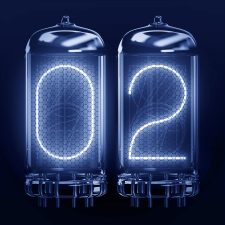
We already know now that the moon month is mostly shorter than the calendar month, being on average approximately 29.5 days. If full moon falls on the first or second of a month, it is possible that another full moon occurs in the same month, for instance in July 2004:
Friday, 2 July 2004, 01:08:54 pm
Saturday, 31 July 2004, 08:05:06 pm
This event is also known as “blue moon”.
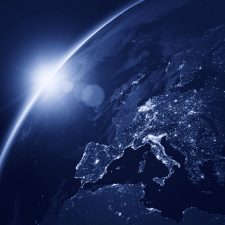
The answer is: “everywhere at the same time”. This refers to the so called Universal Time (UT) though, which is used for general astronomical events. We have already learnt that full moon is an astronomical event, where the moon, sun and the earth play a role by being in a specific position. So, full moon takes place at a specific time in the outer space. This point of time is specified by astronomers namely by the Universal Time.

There are multiple ways of approaching this question. If we look at it from a purely theoretical standpoint, we might be tempted to say that the full moon is infinitely short, since the phases of the moon are changing continuously. The moon is not yet quite full shortly before the full moon, and is already waning shortly afterwards.
However, there is a practical aspect that lets us quantify the full moon as a finite and measurable span of time: Since the Sun is significantly bigger than the Moon, its rays are able to reach just a little over half of the Moon’s surface. This means that the timespan in which the visible side of the Moon’s surface is irradiated (as seen from Earth) is longer than infinitely short.

Whether scientists, astrologers or esoterics, they agree on one thing: the moon influences earth and life on earth. For instance, it regulates the tides through its magnetism. Also continents feel the consequence of this magnetism and either raise or lower their position sometimes up to 26 cm.

In nature it is a known fact: for some animal species, mating takes place at full moon. However, the examples that can be found on this subject are rather simple. Full moon serves in some cases indirectly as the cause (for instance through the high water levels during the tides that the horseshoe crab uses to deposit its eggs) or also as the signal for both sexes of a species to begin at the exact same time to safeguard their future existence (a particular type of fly or also corals). It is understood that also wolves are led by full moon when it is time to mate.

… that people are looking for an argument at full moon or are especially happy …
… that if full moon is surrounded by a haze, a person dies …
… that you raise your hat three times to the moon (being a man) or you make a curtsey (being a woman), in order to protect yourself from misfortune until the next full moon …
… that whoever does not chink glasses with full moon at least once, does not deserve any happiness [Greek toast] …
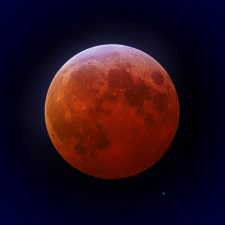
During a lunar eclipse, the Moon moves through the shadow of the Earth. Which means, that the Earth is positioned quite exactly between the Sun and Moon and casts its shadow onto the Moon. This is only possible at full moon and if some other requirements are met. Depending on whether the moon passes the partial or the core shadow of the Earth, we speak of a partial or total lunar eclipse.
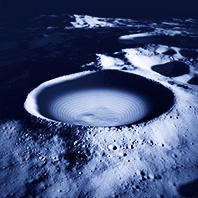
The exploration of foreign celestial bodies is particularly interesting for science, when there is the possibility of life could exist. An important condition for this provides the evidence of water (mostly in frozen form, because it contains oxygen). One may simply say that where water exists, life could develop, or is already present.

As already mentioned in our article about sleepwalking, a connection was made in the past between the moonlight and people, if their conduct was odd, crazy or threatening. One assumed that the moonlight caused this behaviour and spoke of »lunatic«, which derives from the Latin »lunatus« and means more or less »influenced by the moon«. In English, this terminology »lunatic« has been used for many forms of mental illnesses over many centuries. Because many of these disorders could not be explained for a long time (and there are still plenty of questions today), one was in need of a point of reference, a word that would accompany on the path of darkness. The Moon was very convenient.

Other than the moonstone, there are more minerals with the Moon being part of their name: the moonlight topaz. The topaz is a compound of aluminum, fluorine and silicon and has the hardness value of 8, on the Mohs scale of mineral hardness from 1 (= selenite) to 10 (= diamond). Which means it is a very hard mineral. Topazes exist worldwide, but most findings originate in Brazil. When conditions are favorable for the growth of this mineral, their weight can easily reach up to 220 lb and more. The biggest topaz that was ever found, was 3.3 ft long and weighed 2.5 tons (Mozambique, Africa).

Does the full moon have anything to do with our weather? Does the weather change at full moon or at new moon? Is there actually more or less rain and does the temperature therefore drop or rise? A few questions that everyone has surely heard of in one or the other form …

We would like to take a quick look at people who were born at the full moon. As to this, we remind you, contrary to widely spread opinion, that there are not more children being born at the full moon than at any other point in time during the lunar phases. Extensive studies over many decades have arrived at this result. Even though, many people may perceive or experience this differently – the numbers are unmistakably clear. We have already written an article about this »More births at full moon?«. So there are as many full moon children as there are new moon children etc.
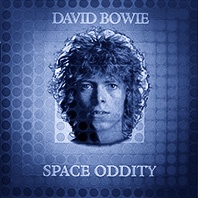
The song »Space Oddity« by the British musician David Bowie (1947–2016) made history. Bowie’s inspiration for this piece composed in 1968, was the science fiction classic »2001: A Space Odyssey« by Stanley Kubrick.
It tells the fictional story of the astronaut Major Tom, who leaves his spacecraft during a flight through space and says his farewell to the people. The last four lines of the lyrics also mention the Moon:

In China, the September full moon is a special day. It is the day of the Moon Festival or Mid-Autumn Festival. This festival is traditionally celebrated on the 15th day of the eighth month of the old Chinese calendar. Because the moon month averages 29.5 days in length, the 15th day is usually a full moon day, however, there are slight shifts in some years. The Moon Festival is one of the most important festivals in China, but is also held in Korea and Vietnam as well as in the respective districts in big cities around the globe.

A moon bridge is a pedestrian bridge, of which the semicircular arch completes a full circle through its reflection in the water and reminds of the full moon. In the old days, the high arch especially, served the purpose for barges to comfortably pass through underneath. Moon bridges originate in the Asian culture and were often built in Japanese and Chinese gardens. The mostly used materials were wood, stone and metal.
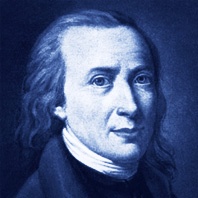
… this line from the poem “Evening Song” from 1778, by the poet Matthias Claudius (1740–1815), belongs to the best-known poems in German literature, not least of all because it was set to music many times; hence, it does not only remain in one’s memory because of its lyrics, but also because of its melody. Especially as a lullaby, everyone has surely heard it before or even sang it to the children:

Maybe it lies within the plan of creation that we are so susceptible to everything that is bigger than what we already know or have already experienced. However, the following merely relates to heavenly bodies …
As we recently wrote in our article »Sun and moon the same size?« here in our full moon blog, the moon changes its distance to earth due to its unusual orbit and subsequently appears to be of a different size for the observer here on earth, depending on how close it is to earth at the time. Is the moon (or another heavenly body) as close to earth as possible, one speaks of perigee, and if it is the furthest away, it is called apogee. You can confidently forget these terms again, however, you may want to memorise that the moon can appear to us in different sizes.